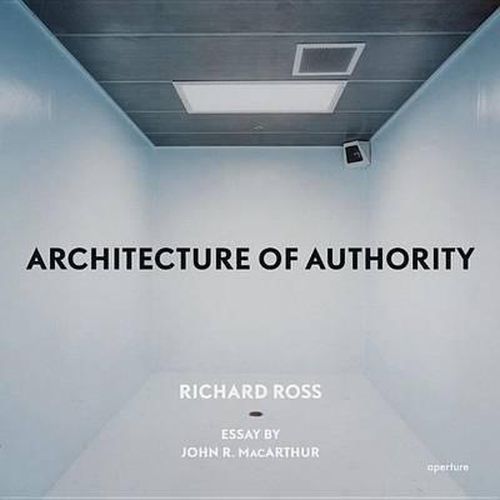Readings Newsletter
Become a Readings Member to make your shopping experience even easier.
Sign in or sign up for free!
You’re not far away from qualifying for FREE standard shipping within Australia
You’ve qualified for FREE standard shipping within Australia
The cart is loading…






For the past several years–and with seemingly limitless access–photographer Richard Ross has been making unsettling and thought-provoking pictures of architectural spaces that exert power over the individuals within them. From a Montessori preschool to churches, mosques and diverse civic spaces including a Swedish courtroom, the Iraqi National Assembly hall and the United Nations, the images in Architecture of Authority build to ever harsher manifestations of power: an interrogation room at Guantanamo, segregation cells at Abu Ghraib, and finally, a capital punishment death chamber. Though visually cool, this work deals with hot-button issues–from the surveillance that increasingly intrudes on post-9/11 life to the abuse of power and the erosion of individual liberty. The connections among the various architectures are striking, as Ross points out: The Santa Barbara Mission confessional and the LAPD robbery homicide interrogation rooms are the same intimate proportions. Both are made to solicit a confession in exchange for some form of redemption. Essay by Harper’s Magazine publisher, John R. MacArthur, also a columnist for the Toronto Globe and Mail.
$9.00 standard shipping within Australia
FREE standard shipping within Australia for orders over $100.00
Express & International shipping calculated at checkout
For the past several years–and with seemingly limitless access–photographer Richard Ross has been making unsettling and thought-provoking pictures of architectural spaces that exert power over the individuals within them. From a Montessori preschool to churches, mosques and diverse civic spaces including a Swedish courtroom, the Iraqi National Assembly hall and the United Nations, the images in Architecture of Authority build to ever harsher manifestations of power: an interrogation room at Guantanamo, segregation cells at Abu Ghraib, and finally, a capital punishment death chamber. Though visually cool, this work deals with hot-button issues–from the surveillance that increasingly intrudes on post-9/11 life to the abuse of power and the erosion of individual liberty. The connections among the various architectures are striking, as Ross points out: The Santa Barbara Mission confessional and the LAPD robbery homicide interrogation rooms are the same intimate proportions. Both are made to solicit a confession in exchange for some form of redemption. Essay by Harper’s Magazine publisher, John R. MacArthur, also a columnist for the Toronto Globe and Mail.